Table of Contents Show
Navigating morality can prove to be a difficult task, especially given the current state of the world. However, with the assistance of the Crypt Keeper from the cult classic television series Tales from the Crypt, learning life’s most profound lessons becomes a bit easier. Produced by HBO, this television series was originally adapted from the popular 1950s EC Comics series Tales from the Crypt, which was a bi-monthly horror comic. The ghoulish Tales from the Crypt host aptly named, the Crypt Keeper (( voiced by John Kassir )), leads the audience through episodes bursting with comedic horror. All the while simultaneously educating them on the perils of falling victim to deadly sins.
The modern definition of virtue has been established as “conformity to a standard of right: morality” (( “Definition of Virtue.” 2020. Merriam-Webster.Com. 2020. )). Before this widely accepted definition, there was an earlier concept developed by Niccolò Machiavelli in the fifteenth century called “virtù,” (( “Synopsis of Virtù.” 2020. Wikipedia.Com. 2020. ))which is explored in his infamous literary work titled, The Prince. A brief synopsis of Machiavelli’s “virtù” involves the primary traits required to be an effective leader, some of which include bravery and forcefulness. These Machiavellian traits of “virtù” run rampant in Tales from the Crypt and present themselves in some unique ways.
How Tales From The Crypt Came To Be
For those of you who may or may not be familiar with Tales from the Crypt, as mentioned above, this television series was originally adapted from the 1950s EC Comics series Tales from the Crypt, created by William Gaines and Al Feldstein. The comic book series emerged during post-World War II, a time when the world was disillusioned, and the lines between right and wrong remained blurred. Accompanying the disillusionment, people desired an outlet that would allow them to process the horrific events that encompassed the war. The outlet for this instance was Tales from the Crypt.
From the conception of Tales from the Crypt, this new horror comic genre proved to be a revolutionary idea. Generally, the 1950s were considered to be quite conservative and viewed many subjects as taboo. The taboo nature of Tales from the Crypt attracted lots of attention, but with the attention, also comes the controversy. This controversy eventually led to the demise of the comic, and the last Tales from the Crypt issue was released in March of (1955). However, there have been two moments of comic resurgence for Tales from the Crypt since (1955), resulting in a brief stint by publisher Papercutz from (2007- 2010), and more recently in (2016) until current, by Super Genius Comics (( “Tales from the Crypt Comic Origins.” 2020. Wikipedia.Com. 2020. )).
In regards to the television series, once the late 1980s rolled around, horror had become a widely popular genre. Realizing that there was money to be made in horror, the well-known production company, HBO, jumped at the idea to adapt the Tales from the Crypt comic into a television series in (1989). One of the most pivotal factors in HBO’s decision to take on the adaptation was the fact that they were a premium channel. As a premium channel, HBO had full creative agency over the content, which was something the mainstream networks were unable to do (( “Tales from the Crypt Television Origins.” 2020. Wikipedia.Com. 2020. )). Throughout the seven years (1989-1996) Tales from the Crypt aired on HBO, the series amassed a large following and created a legacy that still lives on today.
Sins To Avoid According To The Crypt Keeper
The most common sins that society has become accustomed to avoiding are pride, greed, lust, envy, gluttony, wrath, and sloth, which are also known as the “seven deadly sins,” from the Bible. Though far from holy, the Crypt Keeper strives to educate his audience on what not to do if faced with sinful temptation.
Some lessons are more obvious than others, such as thou shall not steal, and thou shall not kill, the usual lessons that align with The Ten Commandments. Nonetheless, because the series is Tales from the Crypt, there has to be an element of shock and horror, which arguably make these lessons more effective. Here, we will traverse through some of Tales from the Crypt‘s more memorable lessons in virtue.
Vanity
An easy sin to succumb to, vanity evokes our inner narcissist. With society’s emphasis on outward appearances and the boom of social media, vanity seems inescapable. Social media platforms such as Instagram and Twitter encourage us to indulge in vanity, perhaps in the form of a selfie. Posting a selfie is generally deemed harmless unless the vanity factor descends into the realm of narcissism. One of the classical examples of narcissism takes place in the form of Narcissus, the ancient Greek deity who stumbled upon his reflection. As the myth goes, Narcissus became enthralled by his reflection, as well as the object of his own desire, to which he learns that he cannot romantically pursue himself and thus, takes his own life.
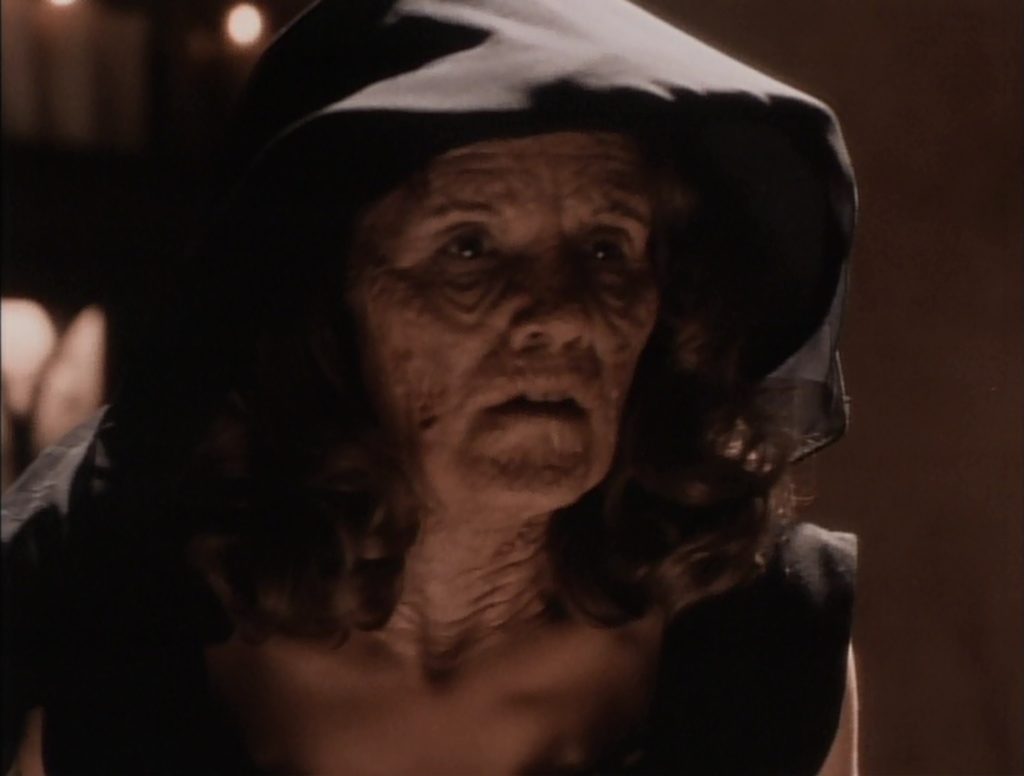
Similarly to Narcissus, the character Sylvia Vane played by Lea Thompson, in the Tales from the Crypt episode “Only Sin Deep,” allows her narcissistic tendencies to take over. Sylvia, a beautiful young woman with a penchant for petty theft, realizes that her profession as a sex worker will never get her what she desires the most, money and power. After a violent encounter with a local pimp, Sylvia takes back her power and pawns some of his stolen jewelry.
The Pawnbroker played by Britt Leach, notices Sylvia’s state of despair and offers her a deal too good to be true. Once Sylvia agrees to the terms of the deal, the Pawnbroker ushers her to the back room and creates a plaster mold of her “beauty,” and gives her ten thousand dollars. However, if she wants her “beauty” back she must return to the shop within four months of the transaction to reclaim it. Ten thousand dollars in our current economy doesn’t seem like much due to inflation, but in the 1980s that amount could get you quite a bit, though not enough to satisfy Sylvia’s hunger.
Sylvia pursues a handsome young playboy, Ronnie Price played by Brett Cullen and begins a romantic entanglement with the young man. Shortly after the affair starts, Sylvia notices her beauty fading away quite rapidly. Alarmed by her accelerated deterioration, Sylvia visits the Pawnbroker to confront him. Upon arrival, the Pawnbroker states that she is one day too late to redeem her “beauty,” unless she can procure one hundred thousand dollars.
In a violent rage, Sylvia returns to Ronnie’s home and steals every bit of jewelry she can find. While pocketing the jewels, Brett walks through the door, but does not recognize Sylvia due to her decrepit appearance, and mistakes her for an intruder. Desperate to redeem her “beauty,” Sylvia murders once again and takes off for the pawnshop. In true form of any Tales from the Crypt episode, the story never ends well, but ultimately, teaches us a lesson in morality. For the case of Sylvia, she loses her “beauty” for all eternity and proves that beauty is sometimes only skin deep.
Deceit
Misrepresenting the truth is deceit, which can sometimes yield dire consequences. Honesty does usually prove to be the best policy, but as human beings, mistakes are made. On occasion, a harmless white lie is told, but what happens when a lie encompasses your entire existence? Well, the character Cathy, played by the critically acclaimed actress Demi Moore, shows the audience what weaving a web of deceit is truly like. The Tales from the Crypt episode “Dead Right,” follows the demise of Cathy, a young woman working a dead-end job who desires more zest out of life.
Unable to escape her current circumstances, Cathy visits the powerful fortune-teller Madame Vorna, played by Natalija Nogulich, in hopes of turning around her luck. Madame Vorna proclaims that Cathy will be fired from her current job, but will be given a new job by the end of the day.
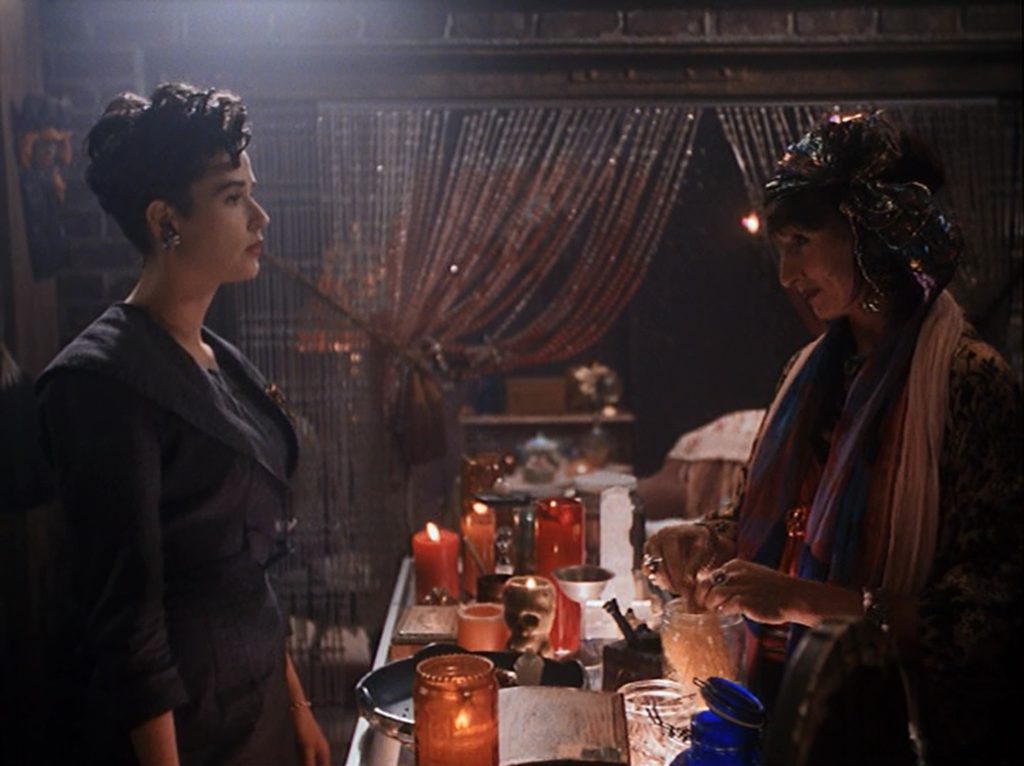
Taking Madame Vorna’s fortune with a grain of salt, Cathy completely writes off the possibility of any of those things occurring. Not so pleasantly surprised, by the end of the day Cathy is fired from her office job and hired on the spot as a waitress for a local Gentleman’s Club. Shocked by the day’s events, Cathy returns to Madame Vorna and demands that she continue to predict her future, to which Madame states that Cathy will meet a “large” man at the club later that evening and she will inherit a large sum of money.
Anxiously surveilling the club’s attendees while at work, Cathy finally spots a man who fits Madame Vorna’s description. The man in question is Charlie Marno, played by another well-known actor Jeffrey Tambor, who resembles Danny Devito’s version of The Penguin in the (1992) film Batman Returns. Cathy is immediately repulsed by Charlie but knows she must hide her feelings of disdain and her true motives in order to see her fortune through.
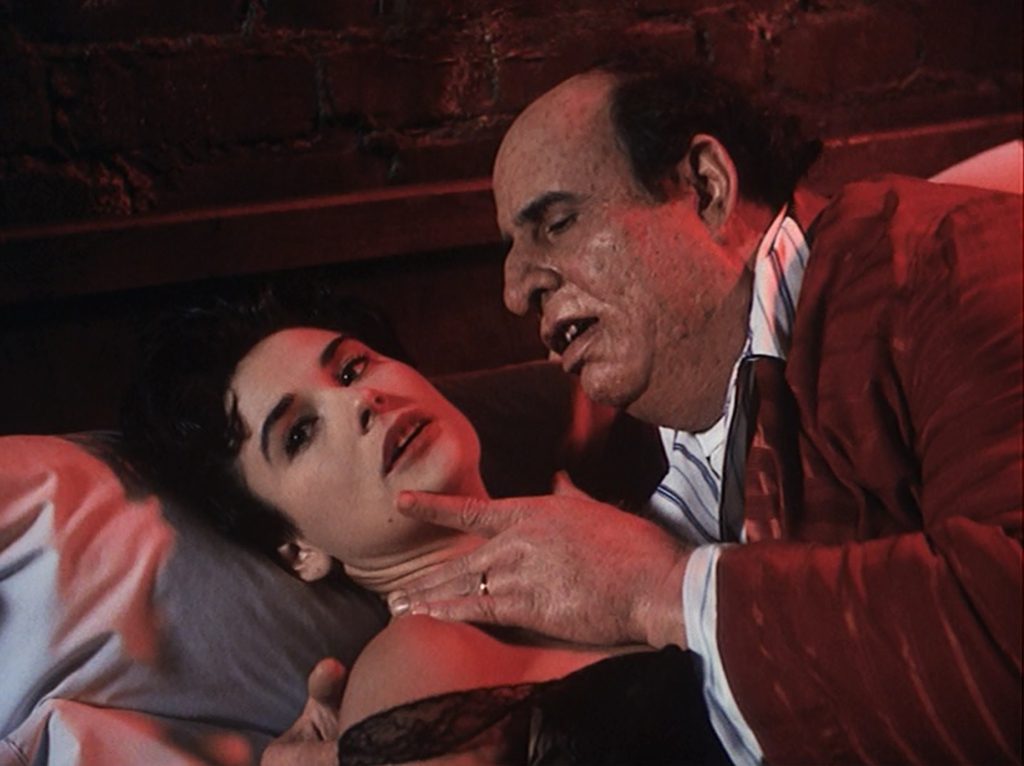
After only three dates, Charlie asks for Cathy’s hand in marriage which she reluctantly accepts in hopes of becoming rich. Soon after their union, Cathy realizes that Charlie has no fortune of his own, but rather Charlie’s elderly uncle is the one with money, therefore, leaving her in the cycle of poverty. Feeling betrayed by Madame Vorna, Cathy furiously confronts her about the misinformation she provided, but Vorna refuses to admit any wrongdoing and insists that she is always right. Immediately after her visit, Cathy stops by the Hudson department store and receives a check for one million dollars as a reward for being their one-millionth customer.
With her newly found riches, Cathy rushes home to taunt Charlie with her winnings and announce their divorce, but once again, there can never be a happy ending with this show. Charlie is distraught by Cathy’s news and begs her to take him back. After they bicker, Charlie realizes he will never get Cathy back and stabs her in the heart with a butcher’s knife. However, the story doesn’t end well for either of them, as Charlie ends up on death row for Cathy’s murder, and is killed by the electric chair. This is a pivotal lesson on how not to approach a relationship, whether it be a friendship or a romantic involvement, being transparent about your intentions should always be a priority.
Wrath
Anger is a basic emotion that everyone experiences, but the intensity of this emotion can vary greatly. When anger turns to wrath, the events surrounding an outburst generally escalate into violence. A stark reminder of wrath’s power is shown in the Tales from the Crypt episode “The Thing From The Grave.”

Stacy, played by Teri Hatcher, is an upcoming model, but the one person hindering her success is her controlling boyfriend, Mitch Bruckner played by Miguel Ferrer. The controlling boyfriend, Mitch, is a special agent with a frightening jealousy issue. On the set of Stacy’s modeling shoot, Mitch arrives and begins to belittle the photographer, Devlin Cates played by Kyle Secor. After Devlin demands that Mitch leave the shoot, he offers Stacy a key to his studio in case things ever become violent with Mitch.
The key exchange between Devlin and Stacy foreshadows the dangerous demise of their secret romance and the wrath they will both face. One evening, Stacy has a steamy encounter with Devlin solidifying their romantic involvement. Towards the end of the visit, Devlin gifts Stacy a golden necklace referred to as “The Mayan God of Truth,” and vows to always protect her from harm. Once Mitch discovers the affair, things turn deadly, and Devlin’s body is buried deep in the woods.
Unaware of what had transpired, Stacy is unable to reach Devlin by phone and begins to worry, rightfully so. Stacy arrives at Devlin’s studio to find a bag of rotten groceries on his kitchen counter and her boyfriend, Mitch, hiding in the shadows. Mitch takes Stacy hostage and drives her to his desolate cabin in the woods, where Devlin’s murder had taken place. Now near the magically powered necklace, Devlin’s decaying body reanimates and ends Mitch’s reign of terror once and for all, rendering Stacy safe. When wrath meets wrath, the strongest will survive, and for Stacy, love conquered all. Arguably, this Tales from the Crypt episode has one of the happier endings of the series, but misfortune must fall upon those who disregard virtue.
Greed
One of humanity’s biggest downfalls is greed. Even when it may seem like we have enough, we find ourselves craving more because of the capitalistic society that envelops our existence. For the conman, Red Buckley played by James Remar, he finds himself in search of the greatest treasure of all, a one-of-a-kind black pearl. This episode of Tales from the Crypt, “Dead Wait,” showcases the darker side of greed.

Mr. Duval, played by John Rhys-Davies, who some of you may or may not recognize from the Lord of the Rings trilogy as Gimli or Sallah in both Indiana Jones: Raiders of the Lost Ark and Indiana Jones and the Last Crusade, owns a large plantation to which he hires Red to work on. Red only accepts the offer because he knows of the treasure hiding on the property, but he quickly realizes things aren’t all that they seem. Kathrine, played by Vanity, a high priestess and girlfriend to Mr. Duval begins an affair with Red, and if there’s anything that Tales from the Crypt has taught its audience, it’s that cheaters never prosper.
In the second half of the episode, the audience is introduced to the housekeeper, Peligre, played by the highly notable, Whoopi Goldberg. Once Red finds the pearl, Peligre double-crosses him and shows her true identity as a powerful voodoo priestess. Peligre leads Red to her village, where he meets his ill destined fate; a machete to the neck. Maybe immense fortune isn’t all that it’s hyped up to be after all.
Pride
The term pride gets used quite often, sometimes it’s associated with a positive meaning and others, not so much. Being excessively prideful about one’s accomplishments can lead to a skewed self-perception and turn friends into foes, especially in the realm of sports. We see the adverse effects of pride mirrored in the Tales from the Crypt episode, “The Pit.”
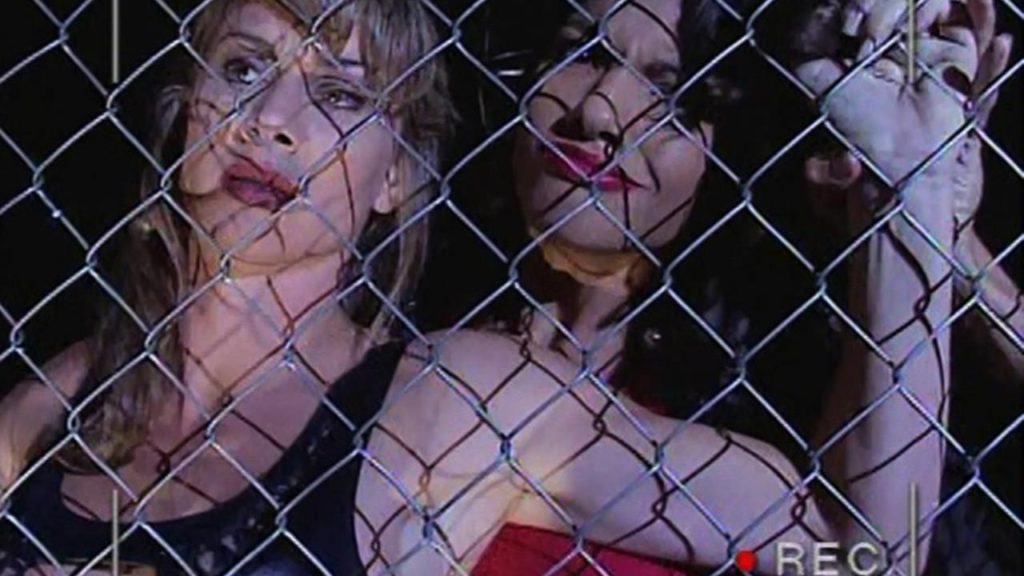
Friendly competition can sometimes turn into a vengeful rivalry, such as the story between Andrea Johnson played by Marjean Holden, and Aubrey Scott played by Debbe Dunning. These two competitors were once ultimate fighting champions, but a match gone awry left them both sworn enemies. Not a coincidental occurrence, both Aubrey and Debbe are married to professional fighters. The wives use their husbands to perpetuate their rivalry and enter them into a death match titled “Chaos in the Cage.”

While Aubrey and Andrea taunt one another over the fight, an alternate plan is brewing. Unbeknownst to the wives, Aaron and Felix meet with the host of “Chaos in the Cage,” Wink Barnum portrayed by the legendary Wayne Newton, and concoct a plan for the wives to take their places. The night before “Chaos in the Cage,” Aubrey and Andrea scope out the arena, but quickly notice that the plans have changed. Blinded by their own egos, the wives now realize that they are the stars of the show and must fight until major bodily harm is inflicted. Reiterating the ill effects caused by pride, it’s best to embrace being humble and know when to be the bigger person.
The Final Lesson
After analyzing some of the deadly consequences in Tales from the Crypt associated with the sins of Vanity, Deceit, Wrath, Greed, and Pride, we should all feel fortunate that reality is a bit more forgiving than the Crypt Keeper.
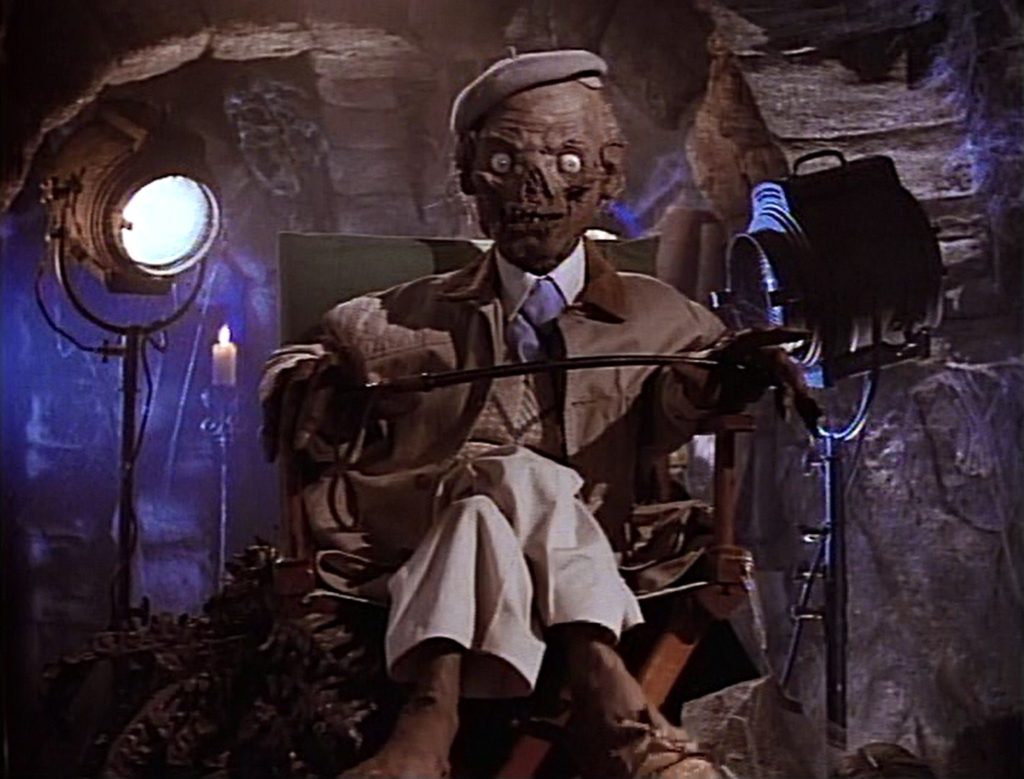
Despite the exaggerated and violent events that occur in Tales from the Crypt, perhaps the fundamental lesson the Crypt Keeper wants us to take away from these examples is self-reflection. Before we execute our plans, take a moment to reflect on their intentions, and think about how your decisions might impact those around you. So, the next time you get an urge to steal a one-of-a-kind black pearl, or sell your “beauty” for ten thousand dollars to a strange Pawnkeeper, maybe decide against it.
